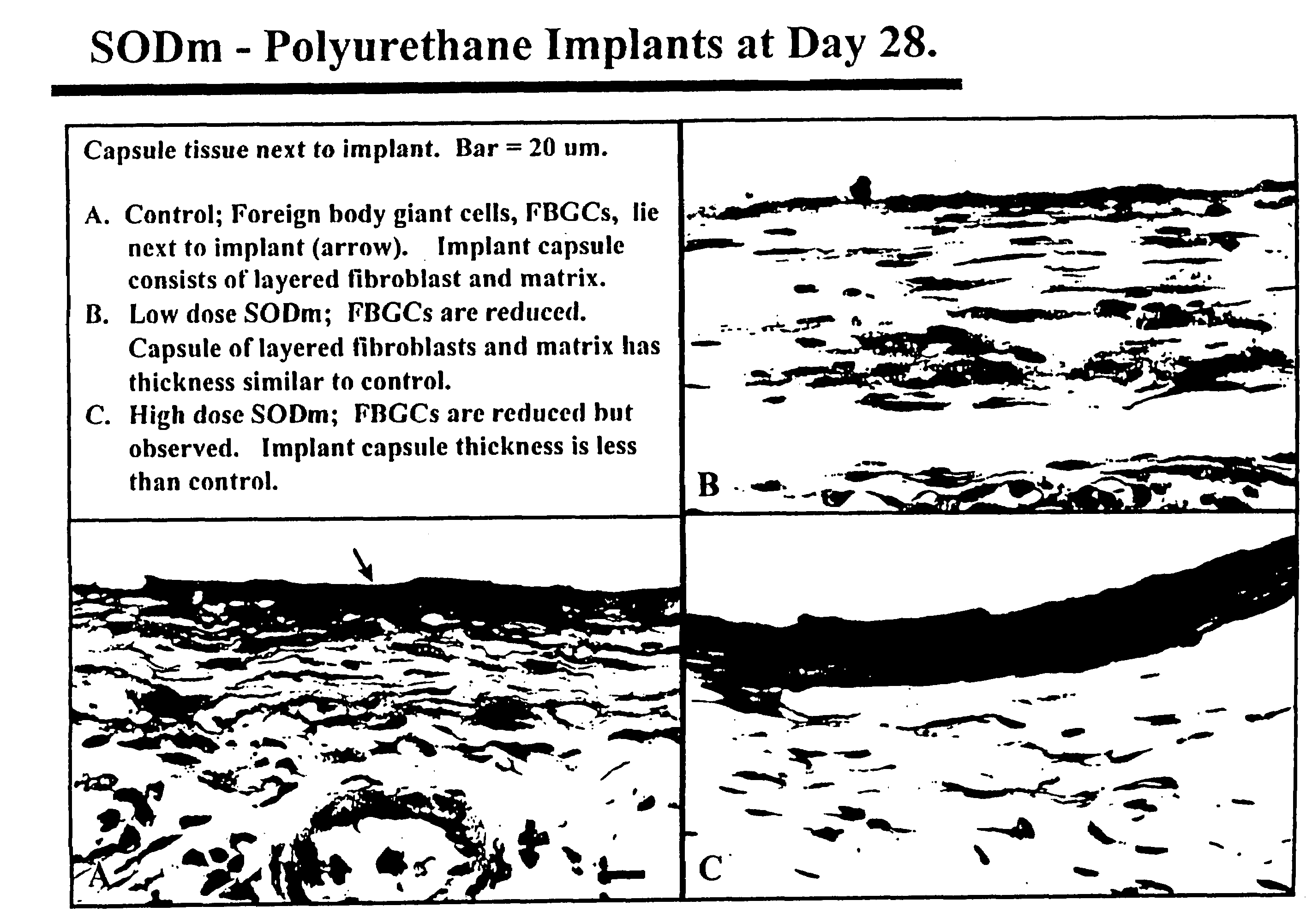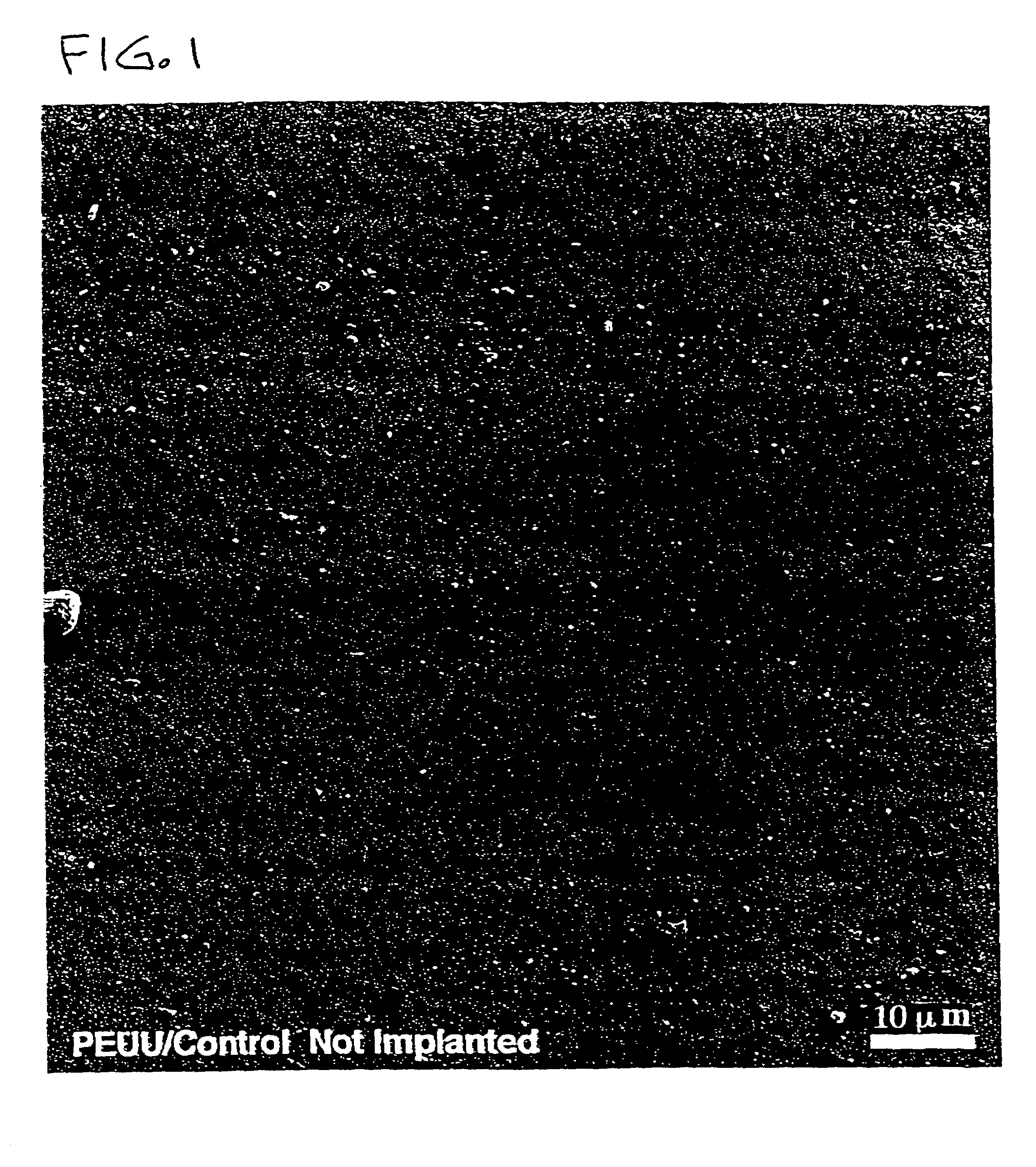Biomaterials modified with superoxide dismutase mimics
a technology of superoxide dismutase and biomaterials, which is applied in the direction of prosthesis, iron organic compounds, peptides, etc., can solve the problems of inability to work, inability to adapt to the environment, so as to improve the resistance of biomaterials to degradation and reduce the inflammatory response
- Summary
- Abstract
- Description
- Claims
- Application Information
AI Technical Summary
Benefits of technology
Problems solved by technology
Method used
Image
Examples
example 1
Preparation of Compounds Used in Template Synthesis
[0142]Chemicals, Solvents, and Materials. UV Grade Acetonitrile (015-4) and Water (AH365-4) were obtained from Burdick & Jackson (Muskegon, Mich.). Isopropanol (27, 049-0), R,R-1,2-diaminocyclohexane (34, 672-1), 2,6-diacetylpyridine (D880-1), 2,6-pyridinedicarboxaldehyde (25, 600-5), and trifluoroacetic acid (T6508) were purchased from Aldrich (Milwaukee, Wis.). 2-(N-morpholino)-ethanesulfonic acid (475893) and its sodium salt (475894) were purchased from Calbiochem (La Jolla, Calif.).
[0143]N-(triphenylmethyl)-(1R,2R)-diaminocyclohexane: To a solution of (1R,2R)-diaminocyclohexane (250 g, 2.19 mol) in anhydrous CH2Cl2 (3.5 L) at 0° C. was added, dropwise, a solution of trityl chloride (254 g, 912 mol) in anhydrous CH2Cl2 (2 L) over 4 h. The resulting mixture was allowed to warm to RT and stirred overnight. The reaction mixture was washed with water until the pH of the aqueous washes was below 8 (4×2 L) and dried over Na2SO4. Filtra...
example 2
Template Synthesis of Compound 38
[0147][Manganese (II) dichloro{(4R,9R,14R,19R)-3,10,13,20,26-pentaazatetracyclo [20.3.1.04,9.014,19]hexacosa-1(26),22(23),24-triene}]. In a 5-L flask N,N′-Bis{(1R,2R)-[2-(amino)]cyclohexyl}-1,2-diaminoethane tetrahydrochloride, (93.5 g, 234 mmol), was suspended in ethanol (3 L), treated with solid KOH (59.6 g of 88% material, 934 mmol), and the resultant mixture stirred at RT for 1 h. MnCl2 (anhydrous, 29.4 g, 233.5 mmol) was then added in one portion and the reaction was stirred at RT for 15 min. To this suspension was added 2,6-pyridinedicarboxaldehyde (31.6 g, 233.5 mmol) and the resulting mixture was refluxed overnight. After 16 h, the template reaction was complete: MS (LRFAB) m / z 443 [M−Cl]+. See accompanying HPLC analyses. This material was taken on to the next step “as is”. The reaction mixture containing the template product in ethanol was cooled to RT and treated (cautiously under Argon flow) with 10% Pd(C) (˜100 g in portions over the next...
example 3
Template Synthesis of Compound 40
[0149][Manganese(II) dichloro(4R,9R,11R,14R,19R)-3,10,13,20,26-pentaaza-(2R,21R)-dimethyltetracyclo[20.3.1.04,9, 014,19]hexacose-1(25),22(26),23-triene, To a stirred solution of N,N′-Bis{(1R,2R)-[2-(amino)]cyclohexyl}-1,2-diaminoethane tetrahydrochloride (4.00 g, 10.0 mmol) in absolute ethanol (100 mL) was added KOH (2.55 g of ˜88% material, 40.0 mmol) and the mixture was stirred at RT for 30 min. under an Ar atmosphere. MnCl2 (anhydrous, 1.26 g, 10.0 mmol) was then added and the suspension stirred for an additional 30 min. or until MnCl2 dissolved. At this point, 2,6-diacetylpyridine (1.63 g, 10.0 mmol) was added to the green mixture and after 30 minutes heating commenced. After refluxing for 5 d, the mixture was dark red-brown. Mass spectrometry and HPLC analyses showed that the reaction had gone to 395% completion to give the bisimine Mn(II) complex (˜94% purity by HPLC): ESI-MS: m / z (relative intensity) 471 / 473 (100 / 32) [M−Cl]+; only traces of di...
PUM
 Login to View More
Login to View More Abstract
Description
Claims
Application Information
 Login to View More
Login to View More - R&D
- Intellectual Property
- Life Sciences
- Materials
- Tech Scout
- Unparalleled Data Quality
- Higher Quality Content
- 60% Fewer Hallucinations
Browse by: Latest US Patents, China's latest patents, Technical Efficacy Thesaurus, Application Domain, Technology Topic, Popular Technical Reports.
© 2025 PatSnap. All rights reserved.Legal|Privacy policy|Modern Slavery Act Transparency Statement|Sitemap|About US| Contact US: help@patsnap.com



